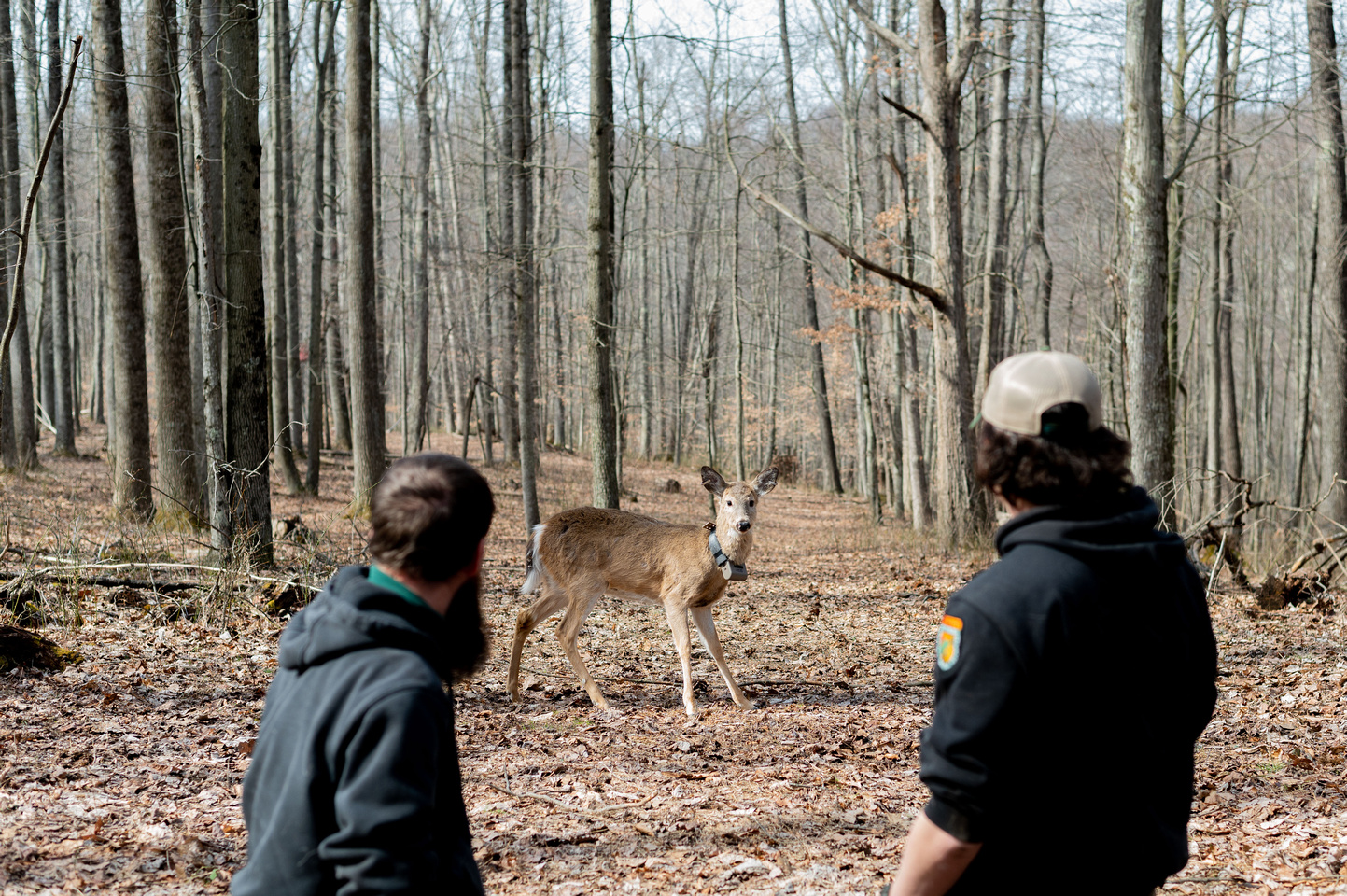Big bucks, young bucks, does and fawns. Thanks to a new West Virginia Division of Natural Resources study, hunters, conservationists and wildlife enthusiasts will soon know more about the state’s white-tailed deer population, their survival raises, behavior and movement patterns.
“We captured 98 deer this past winter and placed GPS collars around their necks so we can collect location data that will help us learn a lot about survival and hopefully give us a better picture of what causes deer mortalities,” said Brett Skelly, assistant deer project leader for the WVDNR. “We are also looking at where bucks go during the rut and where does are fawning around the state.”
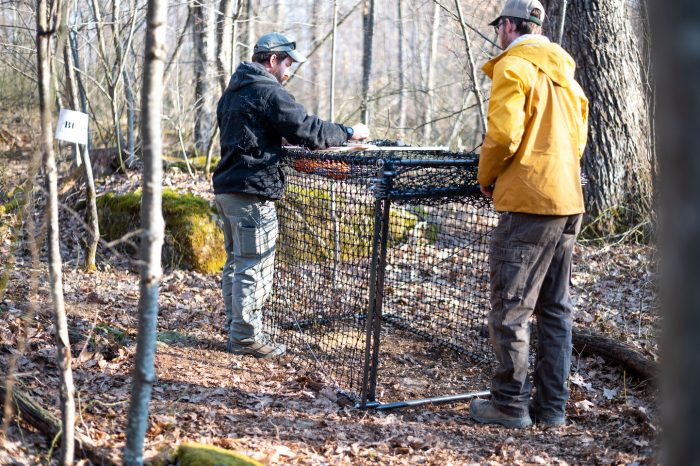
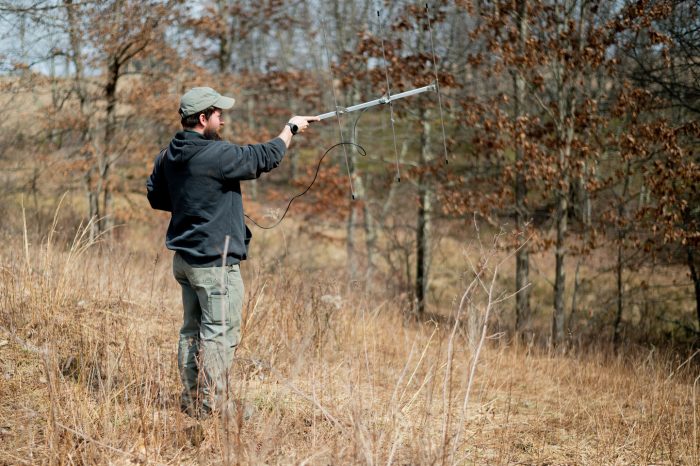
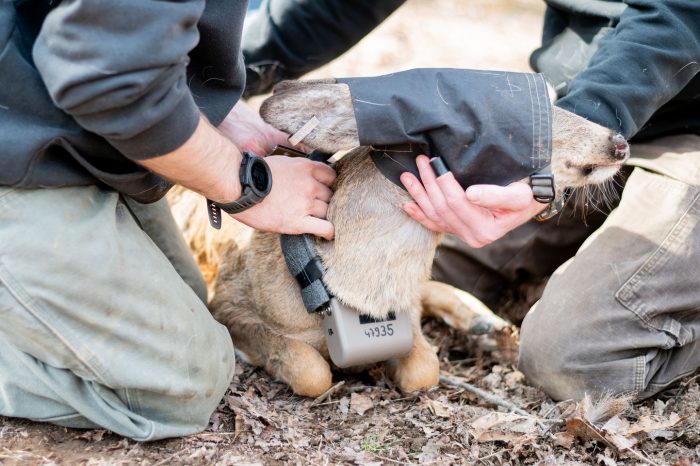
The project is in the first of three years and includes three study areas: Hampshire, Barbour/Upshur and Jackson/Mason counties.
“This is only the second time we’ve put collars on deer since the early 2000s, so we hope to get a lot of information about deer survival, habitat selection and movement rates,” Skelly said.
Some of the things Skelly hopes to learn include:
- What causes deer deaths around the state?
- What are bucks doing during hunting seasons?
- What kind of impact does chronic wasting disease have on the deer in Hampshire County?
- Do more female deer survive to adulthood?
“Everything we learn in this study is going to help us make more informed management recommendations, which will have benefits for our state’s deer population and the hunting public,” Skelly said.
Capturing deer for the study
Capturing deer and placing collars on their necks required a delicate touch. Deer were trapped and given an anesthetic. Skelly and his team also covered each deer’s head with a blindfold to protect the eyes of the animal. After taking vitals, measurements and DNA samples, each deer was given ear tags and a collar and were then put in a safe place and given a reversal so they could get up and go on their way.
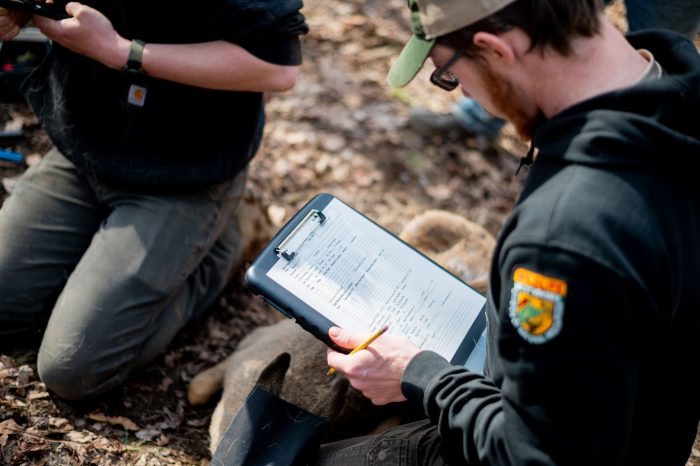
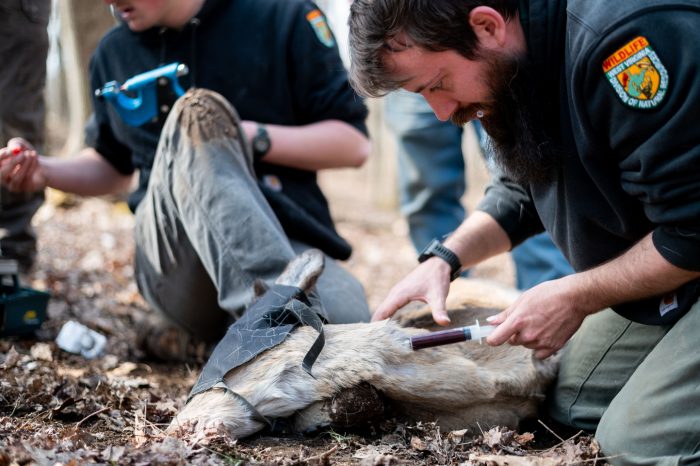
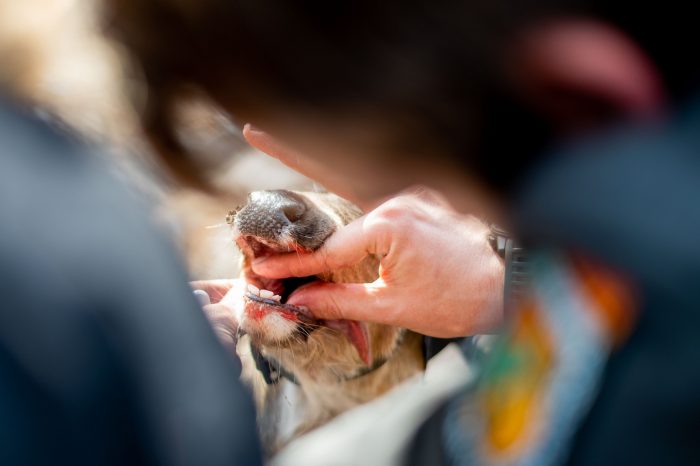
The GPS collars, which expand to accommodate swelling in a buck’s necks during the rut, will send location data to Skelly every 12 hours. If a deer stops moving, he’ll know where to go to determine if and how a deer died. Each collar has a three-year battery life and a release mechanism that automatically drops off after three years.
“After the study, we can retrieve the collars, refurbish them and use them again,” Skelly said.
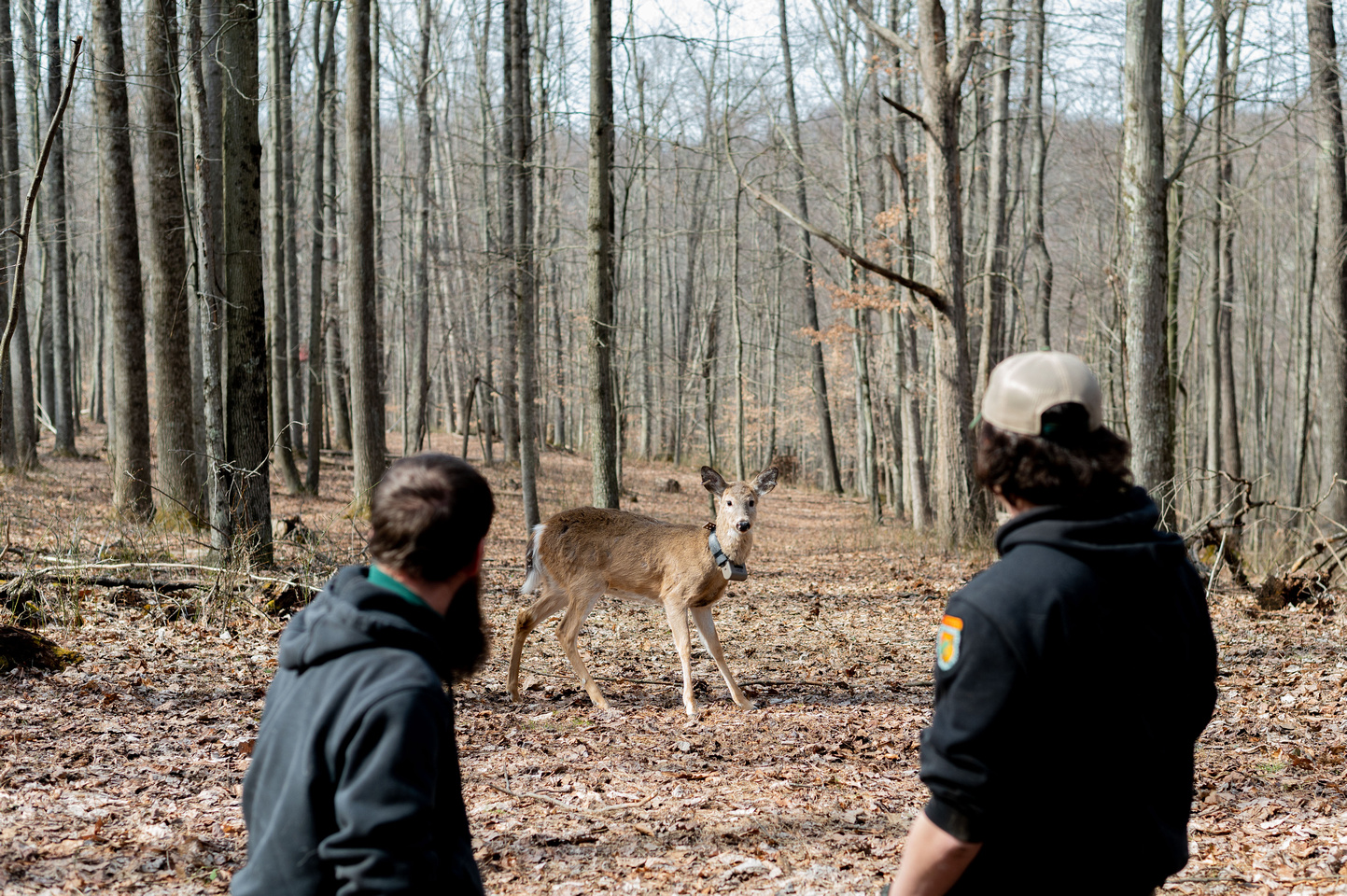
The WVDNR plans to collar more deer during the next two winters, following the Mountaineer Heritage season. Skelly said he expects the study to show that female deer survive at a higher rate than males, that younger deer have a higher mortality rate and that the leading cause of death will be hunting-related.
Collard deer are legal game during deer hunting seasons. Information about the study and what a hunter should do if they harvest a collared deer is available in the West Virginia Hunting and Trapping Regulations Summary.




